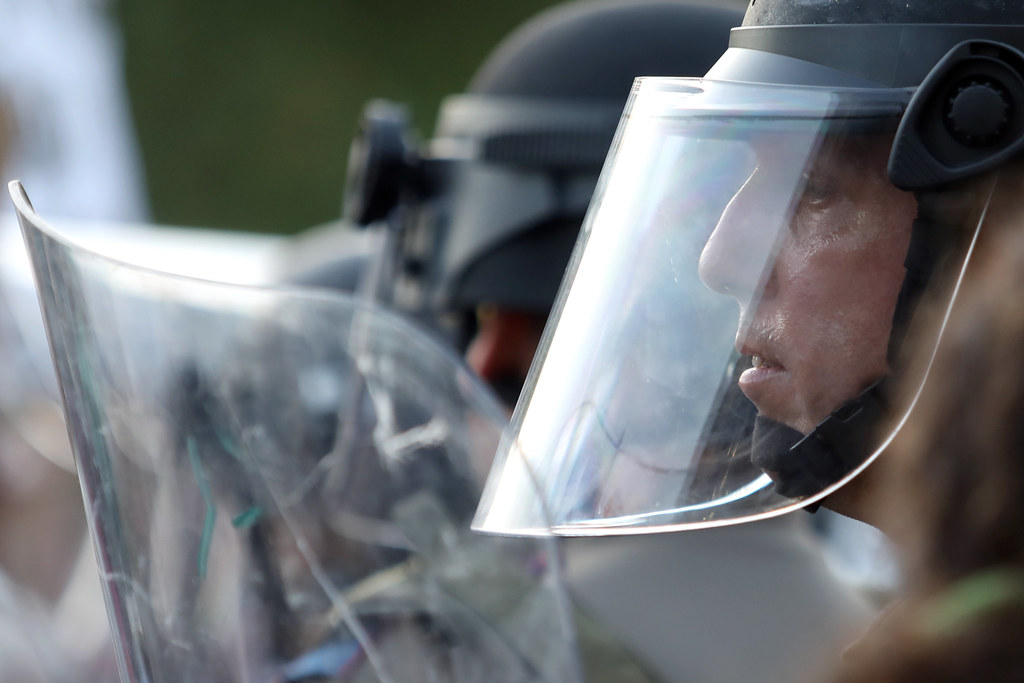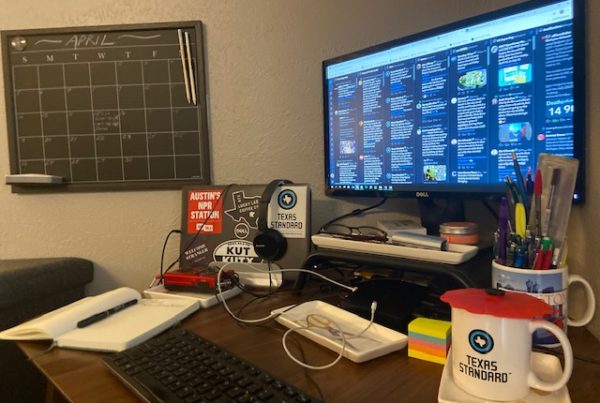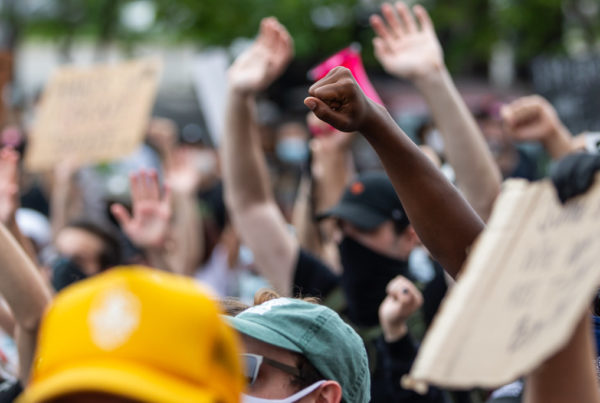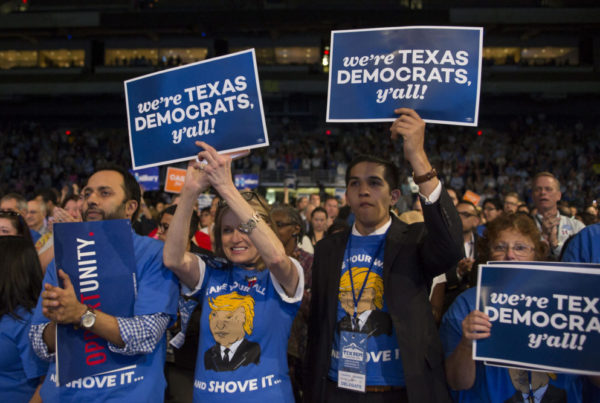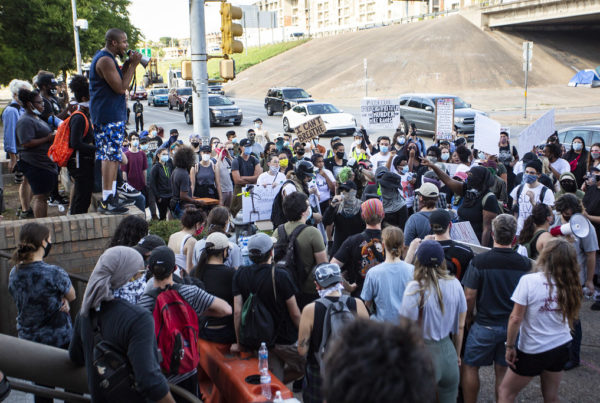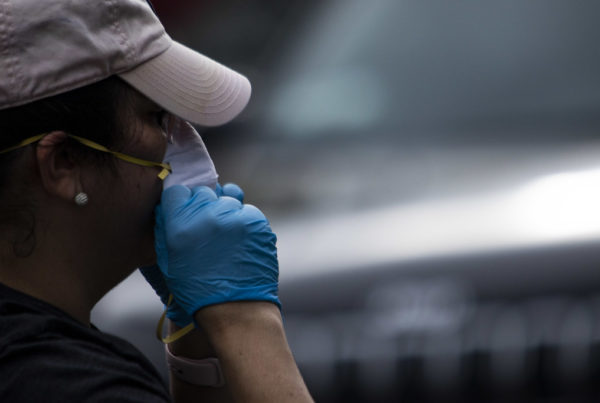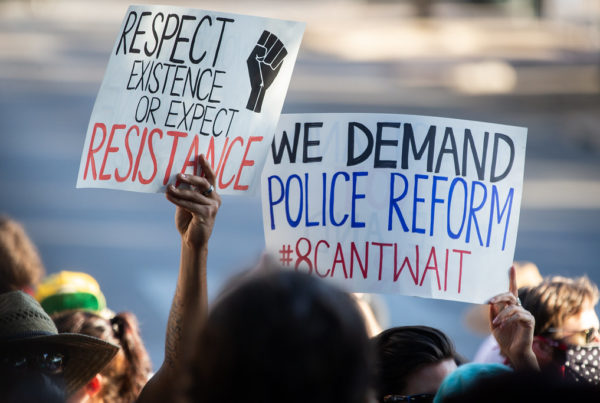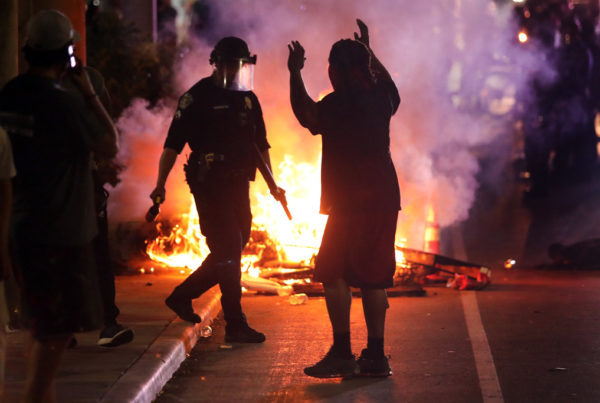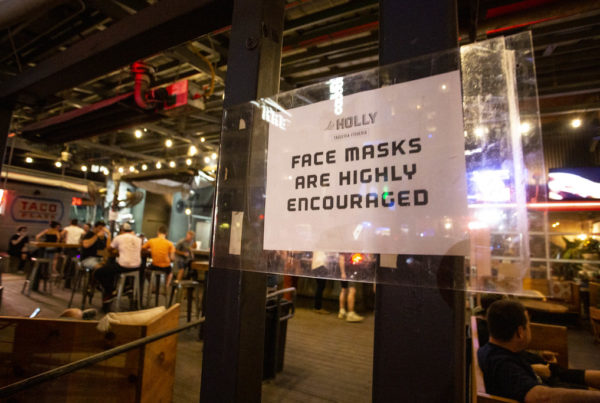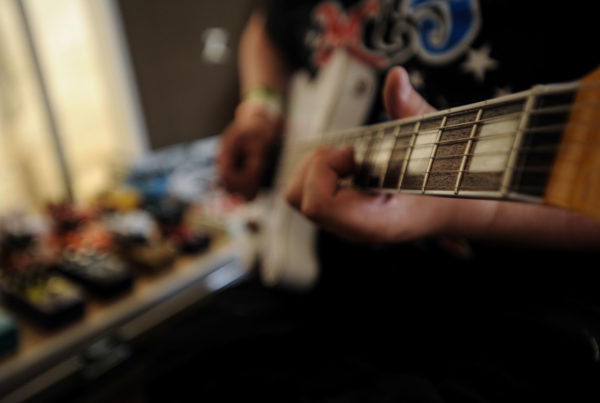Recent protests about how police use force during arrests have now also led to questions about how police use force during protests.
Edward Maguire is a professor of criminology and criminal justice at Arizona State University, where he also serves as an associate director of the Center for Violence Prevention and Community Safety.
This interview has been condensed and edited for clarity.
What is the typical police strategy when it comes to whether to use escalation or deescalation tactics during protests?
We’ve got 18,000 different police departments in this country and a highly localized system of policing. And so it’s all across the board. And so some agencies tend toward strategies that that rely more heavily on de-escalation and some rely more heavily on their riot control training when dealing with protests. And often those approaches tend to escalate matters.
How should police be responding to protests?
What we talk about is based largely on crowd psychology research is that when protesters are engaged in peaceful protest and lawful protest – and by that we typically are referring to they’re not engaging in theft, they’re not engaging in property damage, and they’re not engaging in violence – then police ought to be, at least in the United States, where we have First Amendment rights, ought to be trying to facilitate those protests rather than shut them down. Even if they get loud, even if they get disorderly.
What about when it comes to looting and damaging property?
When you have people engaged in property damage, theft and violence, police need to be out there making arrests. There’s no part of our recommended strategy that involves police standing back and allowing those things to occur in their community. Absolutely not. But what we do recommend is that when they look at a crowd, they have a differentiated approach, not just one approach. And so when you have peaceful protesters, you facilitate their right to continue engaging in that protest activity. And when you have a subset of that crowd that’s engaging in more criminal behavior, as we’re seeing in this past week, police need to take enforcement activity against those people. The mistake we’re seeing is that when you have a small subset of a crowd engaging in crime, police taking enforcement activity against the entire crowd. That’s the part of this equation that’s not appropriate.
What about people standing in the middle of a street during a curfew?
Staying out after a curfew in and of itself, yes, is a violation of the law. This is one of those instances where I think thoughtful police leaders really need to think carefully about – is it worth it, particularly in the midst of a global pandemic – to be making arrests and especially mass arrests for curfew violations? You know, that’s a judgment call for police.
What about police wearing riot gear?
We want officers out there at largely peaceful protests, at least initially, not staging in riot gear. That’s an inappropriate approach to show up to a largely peaceful protest in riot gear. But, yes, when we start seeing objects thrown at police, what police often refer to as airmail, when we start seeing that airmail happen, we have to protect our officers’ health and wellness. And so they need to gear up. And so, in some agencies, you see officers gear up in stages. And so you may have soft uniforms to begin with, as you start seeing things get a little heated up, they may switch to wearing helmets, using riot batons – often you hear that referred to as hats and bats. And then that higher-level of full-blown riot gear when things start to take on riot conditions. And it’s absolutely essential to protect our officers.
What does the evidence show about the effectiveness of making a show of force? Does it curb the behavior police are trying to stop?
When enforcement activity is being focused towards looting and rioting and violence it, of course, can have a deterrent effect – and it should have a deterrent effect. We don’t want that activity going on in our communities. Where we see the backfire effect is when those enforcement activities, the use of force, the use of arrests, being directed at peaceful protesters. And the evidence is very clear that when we see that happening, we tend to see an escalation in grievance and an escalation in a sense of unfairness among the crowd. And that’s where you start to see defiance and rebellion.
What concerns you about recent police use of force during protests?
One of the things that really scares me about what’s going on this week is that, in the past, we have multiple instances of police officers being assassinated after the types of things we’ve seen this week. And that’s what scares me, is that, you know, there are people out there in the country right now who may have mental health problems, access the weapons, and they’re seeing what they consider to be grossly unconstitutional and unfair behavior on the part of police. And they may want to take that out on police. And that’s the part of all of this that scares me, is you see that kind of radicalization happening as a result of what people are seeing on social media. And so police need to really think about that carefully and be measured in their approaches to these events. We don’t need them to hold back in enforcing the law with regard to violence, property damage, theft and looting and so forth. But we do need them to be judicious in the use of enforcement and use of force against largely peaceful crowds. That’s where the mistake is happening this week.
What are the so-called “less lethal” weapons law enforcement use?
Previously these were referred to in the policing industry and by the vendors as non-lethal weapons or less-than-lethal weapons. And they had to change the terminology because people die sometimes when being struck by these weapons. People are sometimes seriously injured as a result of these weapons. And so the terminology changed. We have to be really, really careful about the use of these weapons. They’re not intended as punitive measures. They’re intended to aid in crowd dispersal after a legal dispersal order has been issued. And there are very clear conditions under which they’re supposed to be used. And I’m seeing a lot of evidence this week of them not being used under those conditions. And in addition, we have to be really careful about, if we choose to use those weapons, where we aim them and where people are struck with them because you’re not supposed to be aiming at vulnerable areas like the face, head or neck. Those are places where, if people are struck, they can sustain really serious damage, particularly with the eyes. And so lots and lots of inappropriate uses of these techniques over the past week that I’ve seen. And these are really valuable tools that are supposed to be used and are effective under very certain, specific conditions. And I think police need to think carefully about when and how they deploy these tools.
Why not have a protocol that says you don’t use even those less lethal weapons unless you are prepared to take that person’s life, because that could be the upshot of that decision?
Yeah, I agree that we need to do a much better job in this country of regulating and prescribing the precise conditions under which it’s appropriate to use these kinds of tools. They’re being used in a fashion over the past week that is often inappropriate, very dangerous.
How should police disperse a crowd when necessary?
There are a few key conditions that need to be met here. You need to declare the assembly unlawful. And that declaration needs to be lawful – it can’t just be willy nilly like you don’t want to deal with it anymore so it’s an unlawful demonstration. So you need to issue a lawful order stating that this is now an unlawful assembly. One of the issues that comes up in a lot of communities is that police say they make these orders, but the protesters don’t hear the orders. I’ve been present at numerous protests where that’s happened, where you just simply never hear an order to disperse. And then the police need to give people sufficient time to be able to follow that order. You can’t just issue an order and then immediately be shooting projectiles and chemical agents at people. And one of the other ones that’s come up a few times over the past week has been that the people need to have the ability to exit the area. There need to be appropriate avenues for egress. And you can’t kettle or corral protesters together and then start shooting agents at them in almost kind of a punitive way. And so we’re seeing lots of violations of those basic principles over the past week.
Are police departments in the U.S. properly trained when it comes to handling protests?
No, not at all. But I do believe that they’re properly trained for handling riots. And so what’s happening is police, because they’re not properly trained in handling protests, treat protests as if they’re riots. And what we know from the research evidence is that when you do that, when you over-respond to a protest, treating it prematurely as if it’s a riot, you can actually escalate what’s going on with the crowd and help to almost create a riot. And so we need to teach police more effective solutions for preventing riots, not just responding to them.
If you found the reporting above valuable, please consider making a donation to support it here. Your gift helps pay for everything you find on texasstandard.org and KUT.org. Thanks for donating today.


